In his fourth season as a loaned player by Boca Juniors, the 24-year-old Italian-Argentine Mateo Retegui is finally getting the credit and status he deserves, especially by clubs in the Serie A, like AC Milan, Inter and Fiorentina who intend to sign him in a summer move.
In fact, such relevance came not only from Mateo’s outstanding stats in the last year’s Superliga Argentina where he was the top goalscorer with 19 goals, but also due to his consistency which allowed him to stand out again by scoring 11 times this season in just 21 games with struggling side Tigre.
Besides that, Retegui’s interest also started to emerge after his goals against Malta and England in his first callup with the Italian national team. Even though he is still playing in a less competitive reality than the other options who perform in top European sides, Roberto Mancini made a clever move by calling Mateo Retegui up to the Azzurri.
As we are going to develop further in this tactical analysis, Retegui is a physically strong striker who can easily adapt to a more challenging scenario due to his strong mental attributes.
In this scout report, we will take a look at Mateo Retegui role in Tigre and Italy’s tactics as well as the relationship between his main attributes and his tactical routines as a striker, while finally looking at the principal details that make him a natural goalscorer.
Retegui’s playing style
Before analysing Retegui’s style of play, let’s have a look at his team’s offensive tactical plan: the 4-4-2 diamond. Yet, this model is flexible as, in some cases, the second striker and the left-centre midfielder join Retegui as wingers, turning the formation into a 4-3-3. With flexible positioning concerning the side that he decides to play, Retegui predominantly plays on the left side.
Tigre normally give the flank to the fullback. However, the midfielders can also occupy that spot, especially in more advanced zones of the pitch.
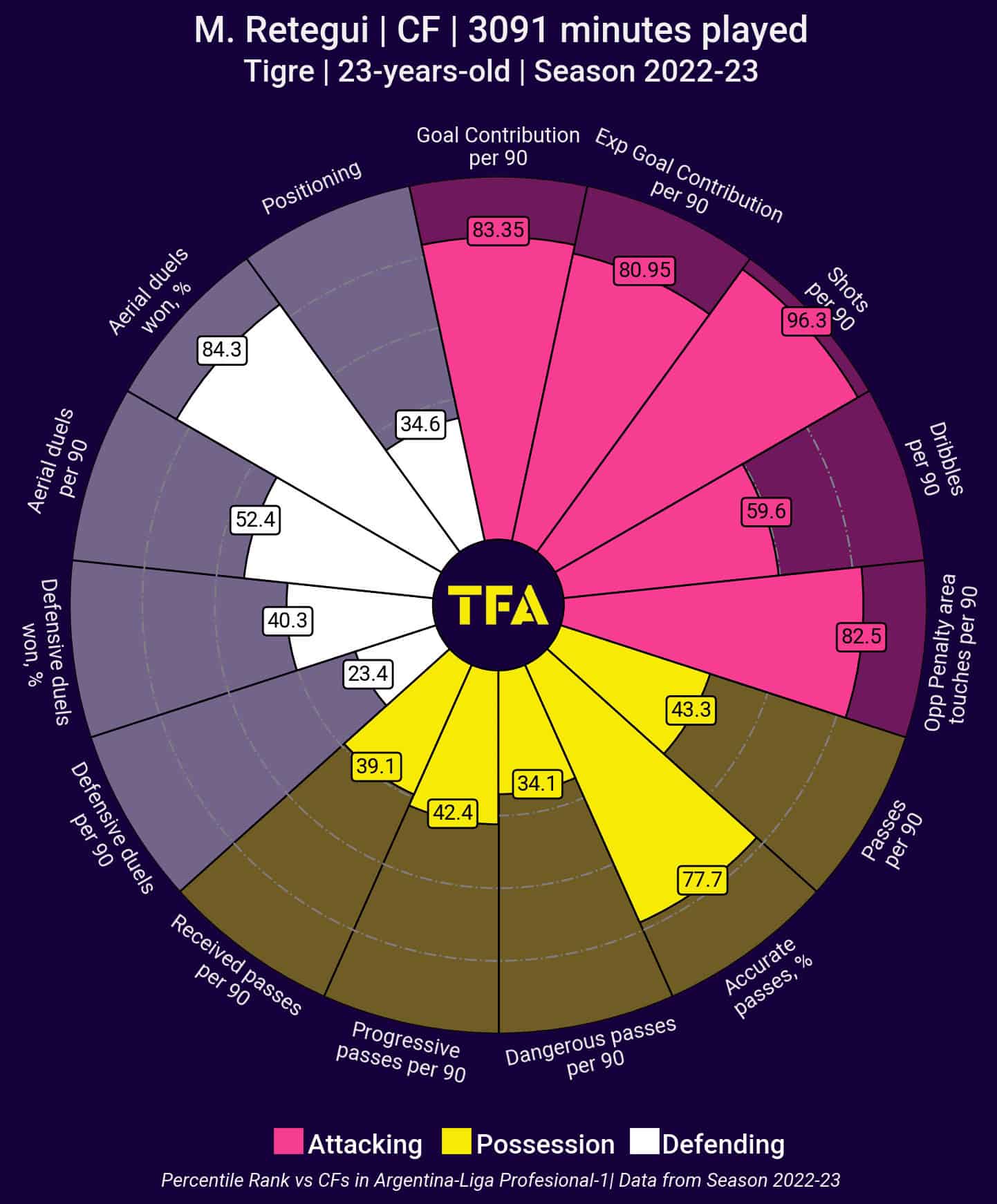
Through his style of play, the Italian makes his physique an advantage to his game where he is the Tigre’s main reference not only inside the box but also when the centre-backs seek him during a more direct play. In fact, as we can see in the above radar, Mateo is a plus in his side’s aerial game where he ranks in the 84th percentile (%) in won aerial duels.
Such advantage has to be because of his height which is about 1.86 meters, and also due to his jump impulsion. Besides that, his strength also allows him to be a tough opponent to beat during such duels, in a very demanding league from a physical point of view.
He’s not a very explosive player, yet he can reach a rapid speed during a sprint, especially in 1v1 situations where he puts the ball forward and often passes the defender. This happens often on the flank where there is more margin to progress on and off the ball, as the image displays.

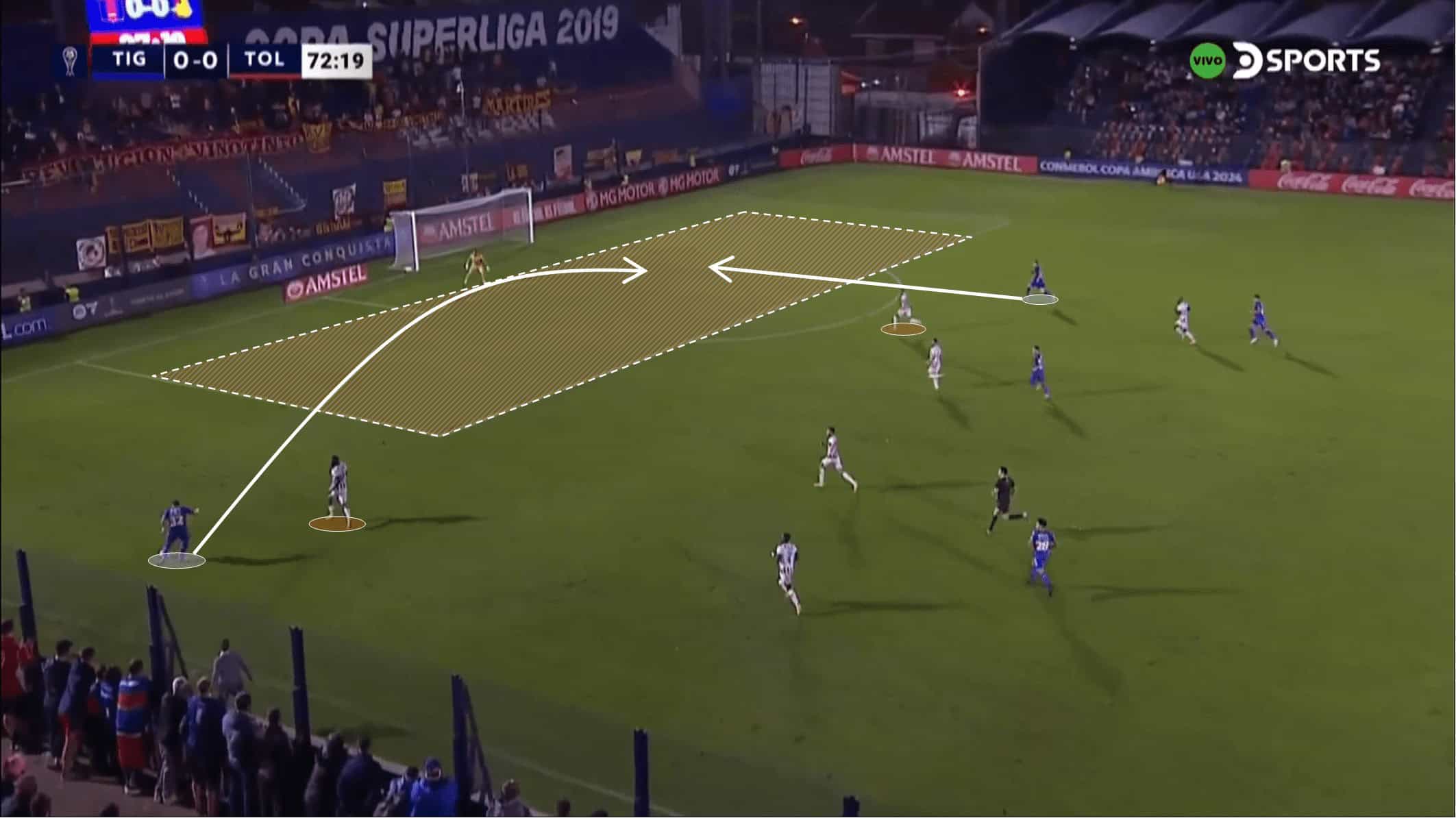
Staying on his physical attributes, we also noticed that Mateo seemed to have a decent endurance level where we saw him constantly running from the first to the last minute. As a matter of fact, this level of stamina and his work rate are directly related.
Through our analysis, we also believe that he appears to be a very mentally strong and combative player who is persistent not only in pressing but also in his offensive movements. With that said, his game isn’t ruled by his creativity and technicity in individual plays, but mostly by his physical efforts.
Resuming Tigre’s tactical plan, let’s now try to comprehend where Retegui can directly or indirectly influence their game in possession. So, there are two main moments in the Italian way of playing which are a more positional approach to support Tigre’s build-up and, when the ball is uncovered, a more mobile strategy in which Retegui attacks the depth.
In the initial phase, Tigre try to build up through a short-passing strategy where the defensive midfielder is important to make the link between the defence and midfield. However, this side, whenever they are highly pressed, have serious difficulties in proceeding with this kind of approach and so they choose a more direct game in which Retegui is the main reference.
Normally, he’s positioned deep, leaned against the opposition’s defensive line and when one of the centre-backs makes a long pass towards him, he immediately gets out of position in order to intercept it. Now it’s in this kind of situation that Mateo has the advantage, where he can opt to play a headed pass to one of the midfielders or to the other striker.
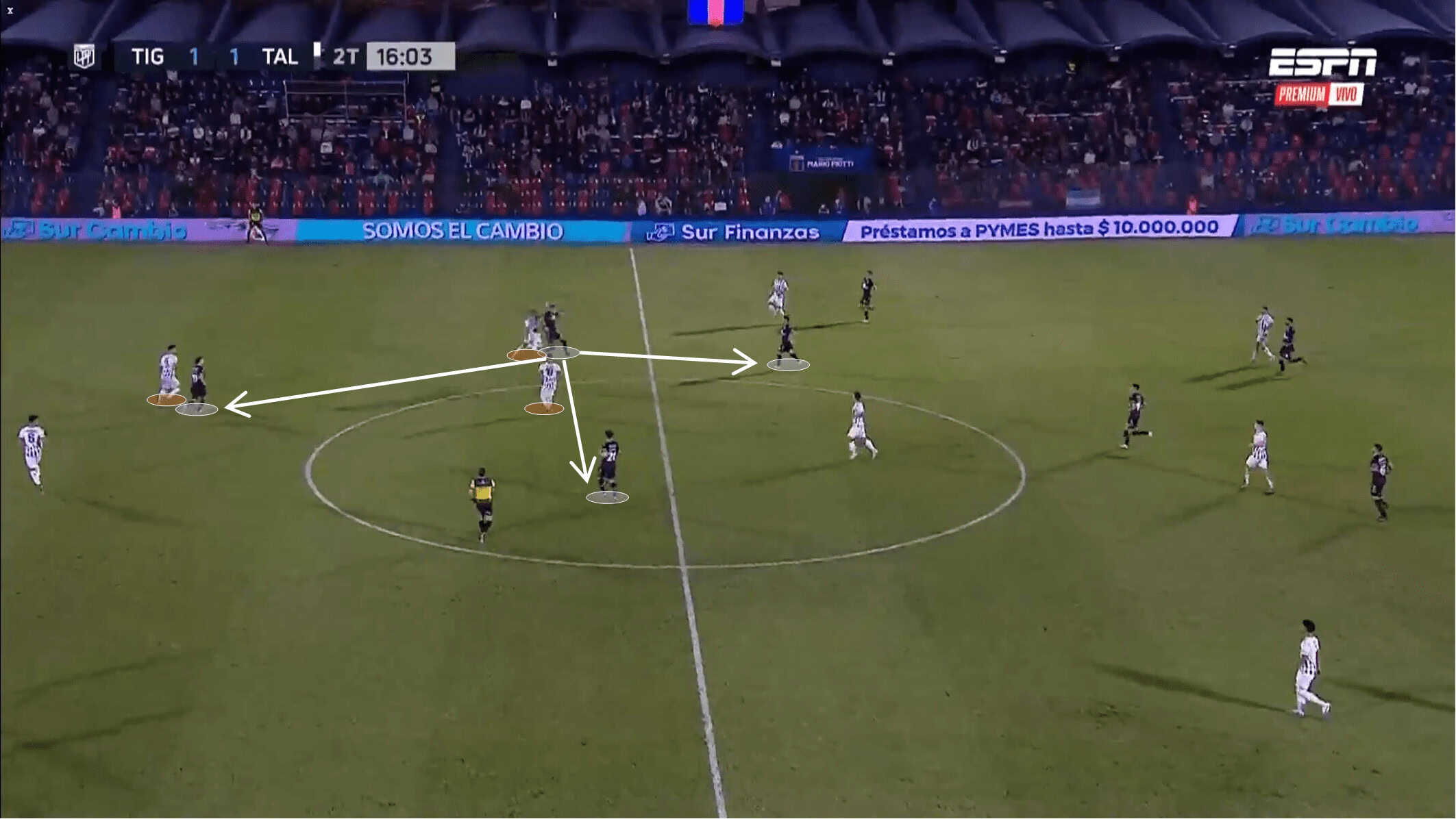
Besides that, he can receive the ball with his back oriented to the goal and, by using his strength, protect the ball from the defender and pass to someone who has a wider view of the game. Actually, Retegui ranks in the 78th percentile (%) concerning accurate passes which is a pretty good stat for someone who plays in that position.
It is also common to see Retegui attacking the depth right after he makes this pass because the defenders are often attracted to his movement, leaving a big gap on their back as the image illustrates.
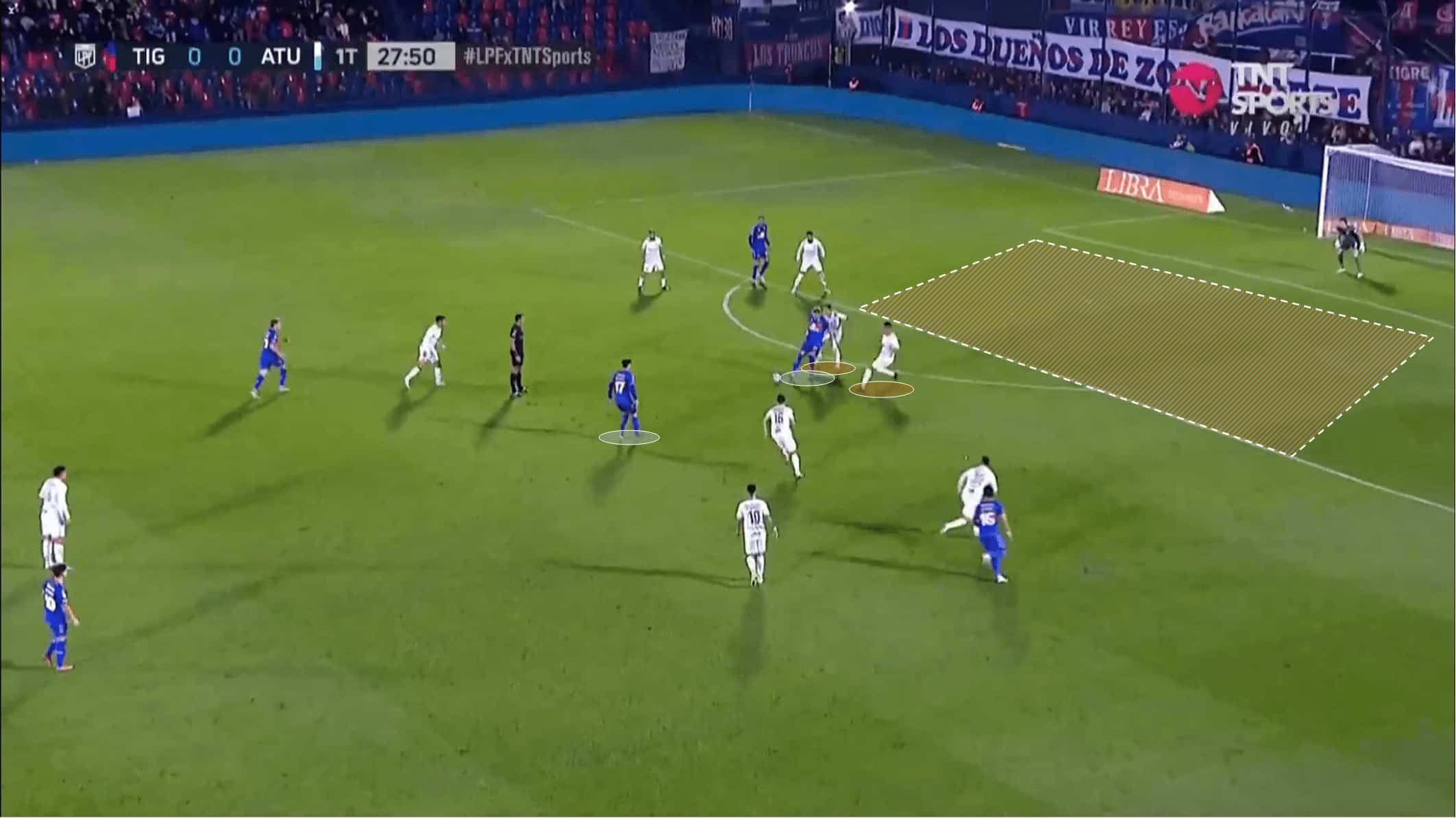
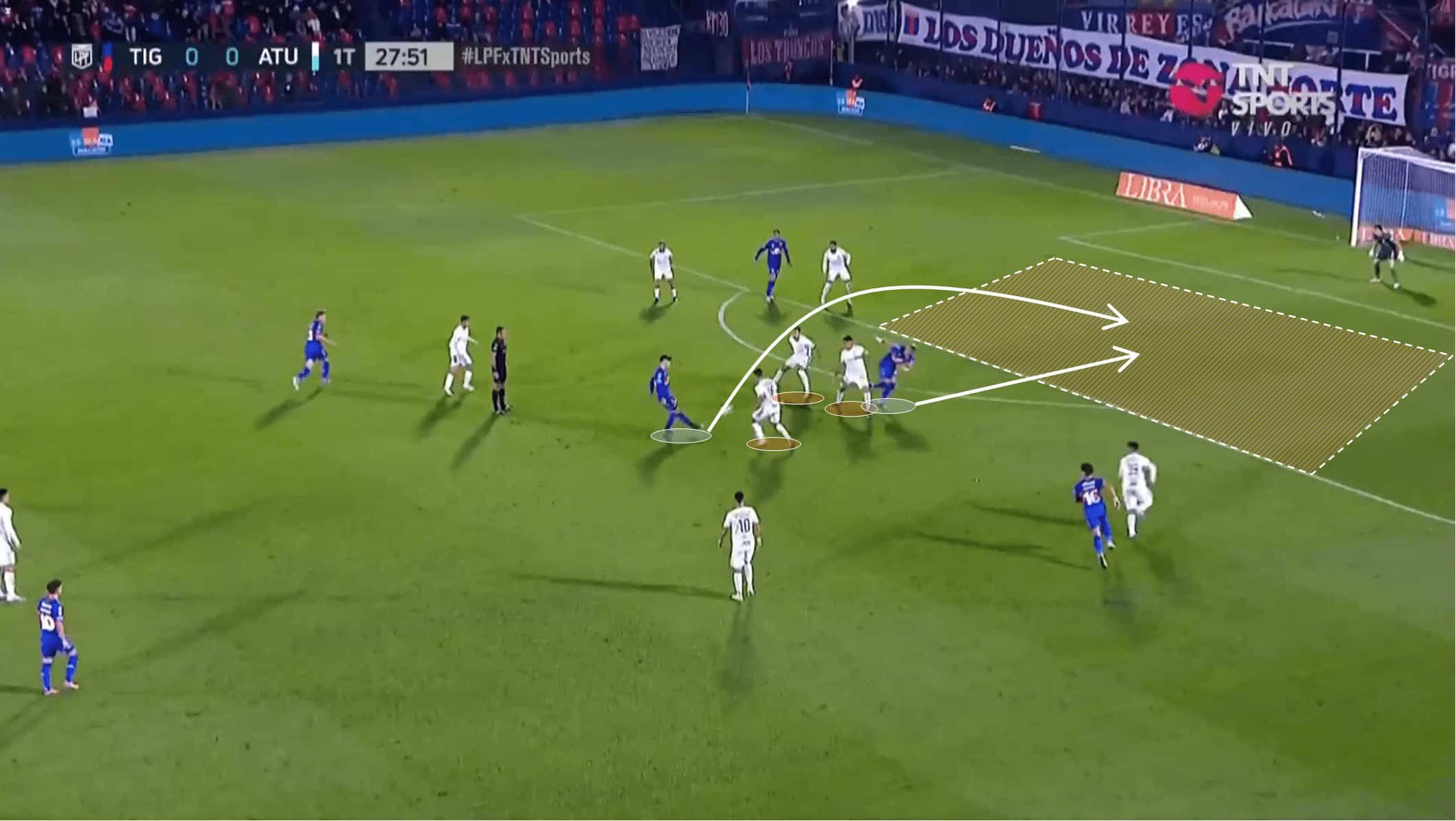
Finally, while Retegui is supporting his team’s build-up, it is also typical of his game to switch the play from an overloaded zone to an isolated one. In the image below, we can observe a case of this precise situation, yet with a recurrent and special feature from the Italian, which is the use of his weaker foot (left) in long passes.

The other frequent and observable moment in Mateo’s game is the depth attack when the ball is uncovered. In other words, when there are players in position to play a quality through ball in behind the opposition’s defensive line. Such pass is often made by creative players in the Northern Blues’ squad like Facundo Colidio and Lucas Menossi.
The Italian likes to position himself on the defender’s back in order to surprise them with a diagonal run into the depth. This movement can be conciliated with the second striker’s descent on the pitch in order to link with the midfielders. In fact, similarly to the situation that we saw above, with this approximation a void is created and Retegui takes advantage of that.
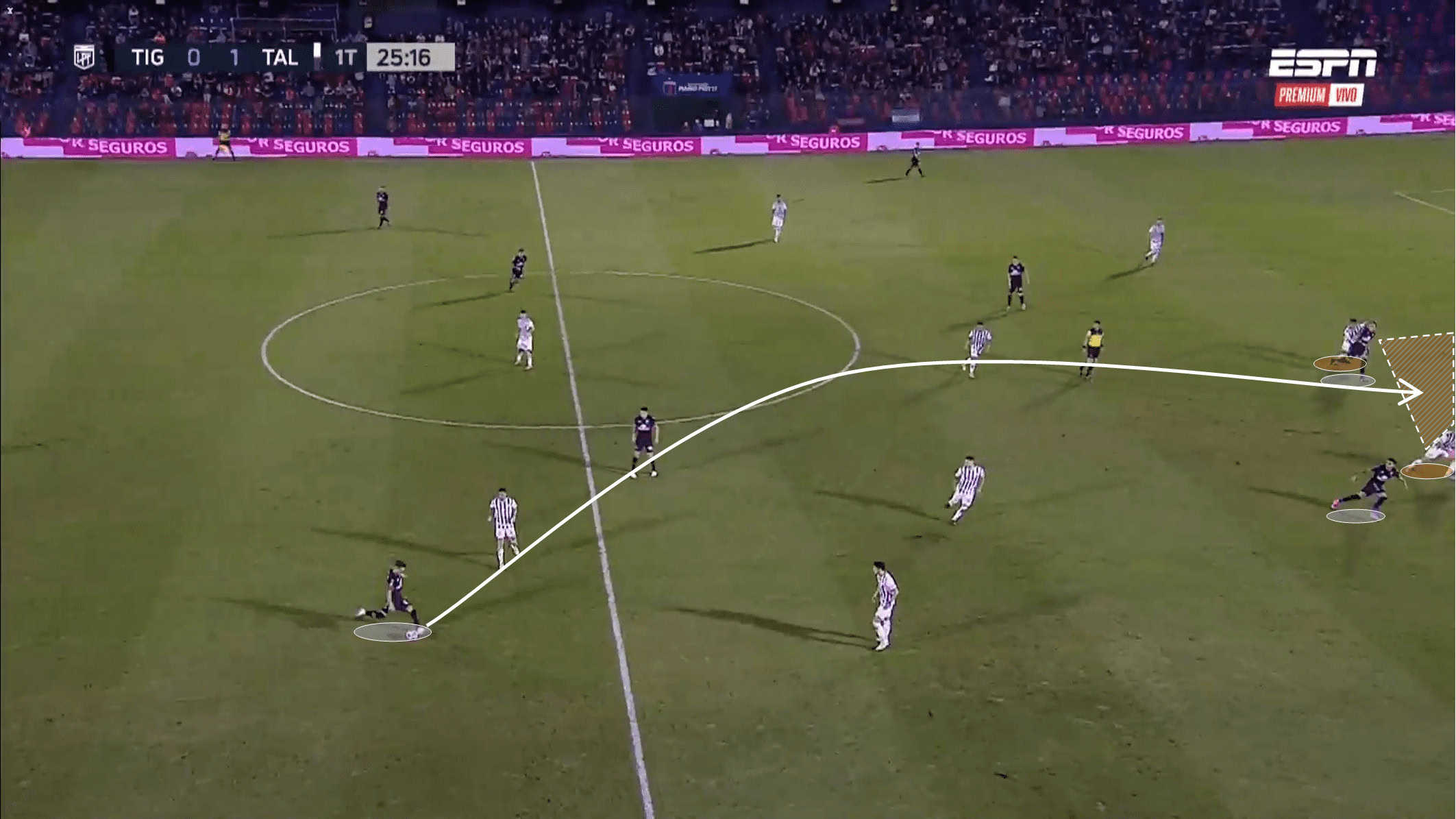
Although it is most likely instructed by his coach Diego Martínez, we think that Retegui’s movements are too monotonous and uniform, increasing the predictability of his actions during the game. For instance, there are times that he could have explored the space between the lines, instead of being deep in the other side’s backline, as is noticeable in the following image.
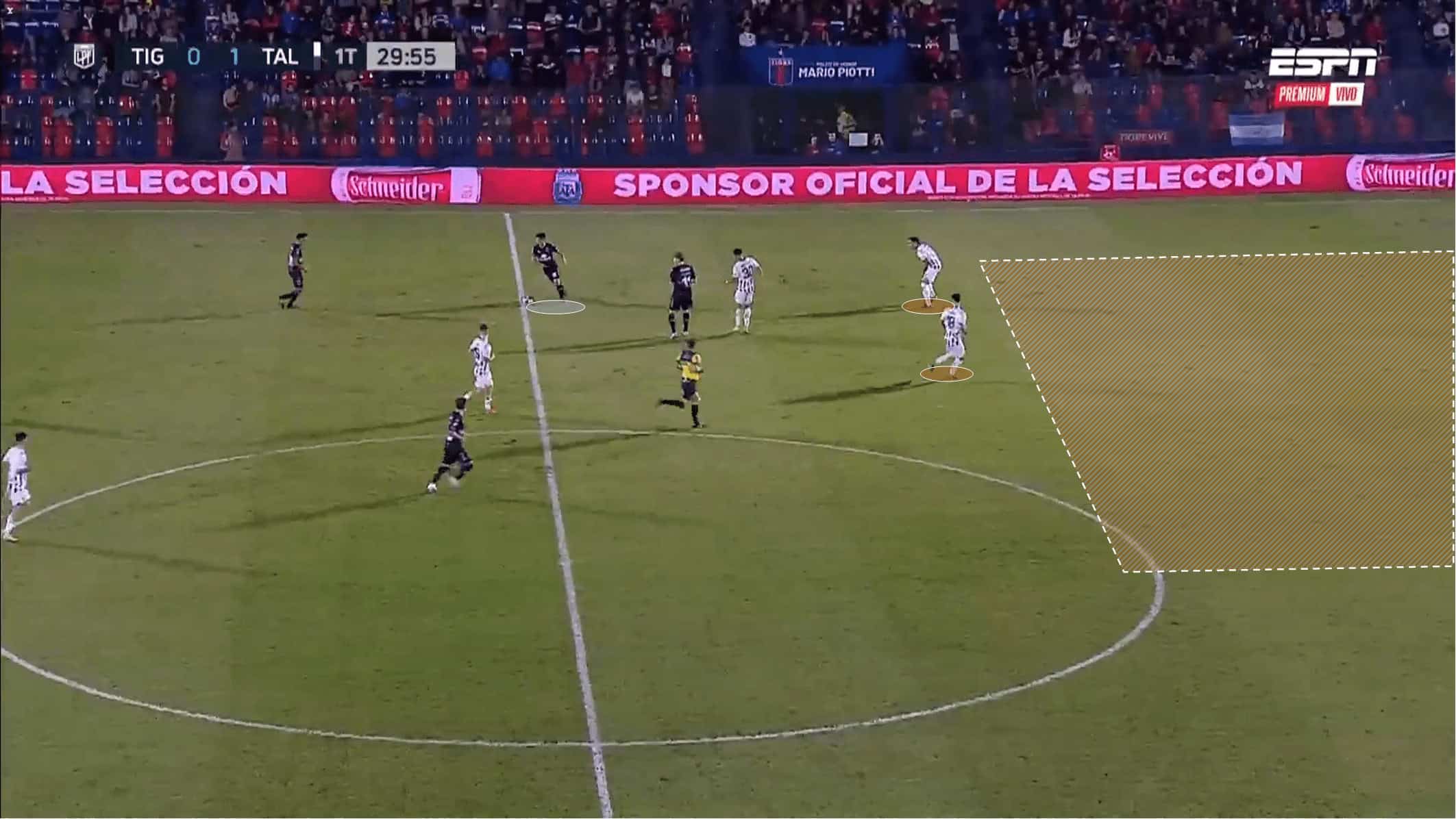
Even though, as we analysed, Retegui is strong on the flank due to his pace and strength, he still shows some concerns about using the width of the field. The following image reveals this precise issue, where Mateo was in the perfect position to attack the space on his left and gain a numerical advantage but instead explored, as usual, the depth from an interior zone of the pitch.
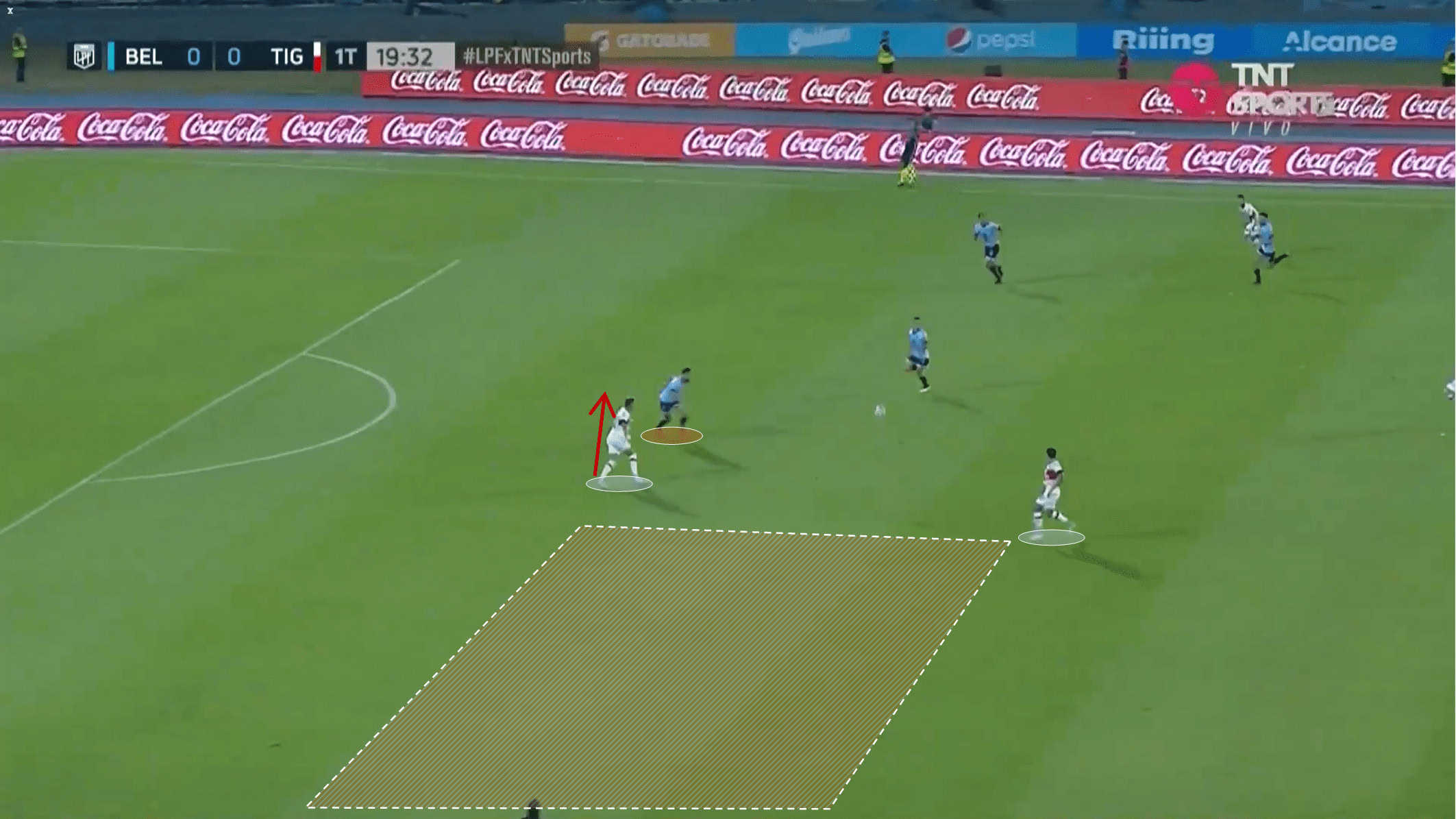

Retegui: A consistent striker
With 34 goals scored in the last two seasons, Retegui’s contribution is close to 40% of Tigre’s total offensive outcome. This outstanding stat isn’t a mere coincidence. Retegui ranks in the 83rd percentile for his team’s goal contributions per 90 minutes and in the 96th percentile for shots during the match.
As we mentioned, Mateo’s mental and physical attributes are the ones with a higher and more positive influence on his game. For instance, even though the ball rarely meets him during his depth attacking movements, he still does them no matter what, because it increases the odds for a favourable offensive approach.
Although his technical ability isn’t one of his strongest features, both his shot and pass are pretty decent in terms of accuracy and power.
He is a player that creates danger predominantly inside the box through headers or even through tap-in goals due to his intelligence and opportunism off the ball. As we can see, most of the Italian’s goals this season were inside the box where he has such an advantage.
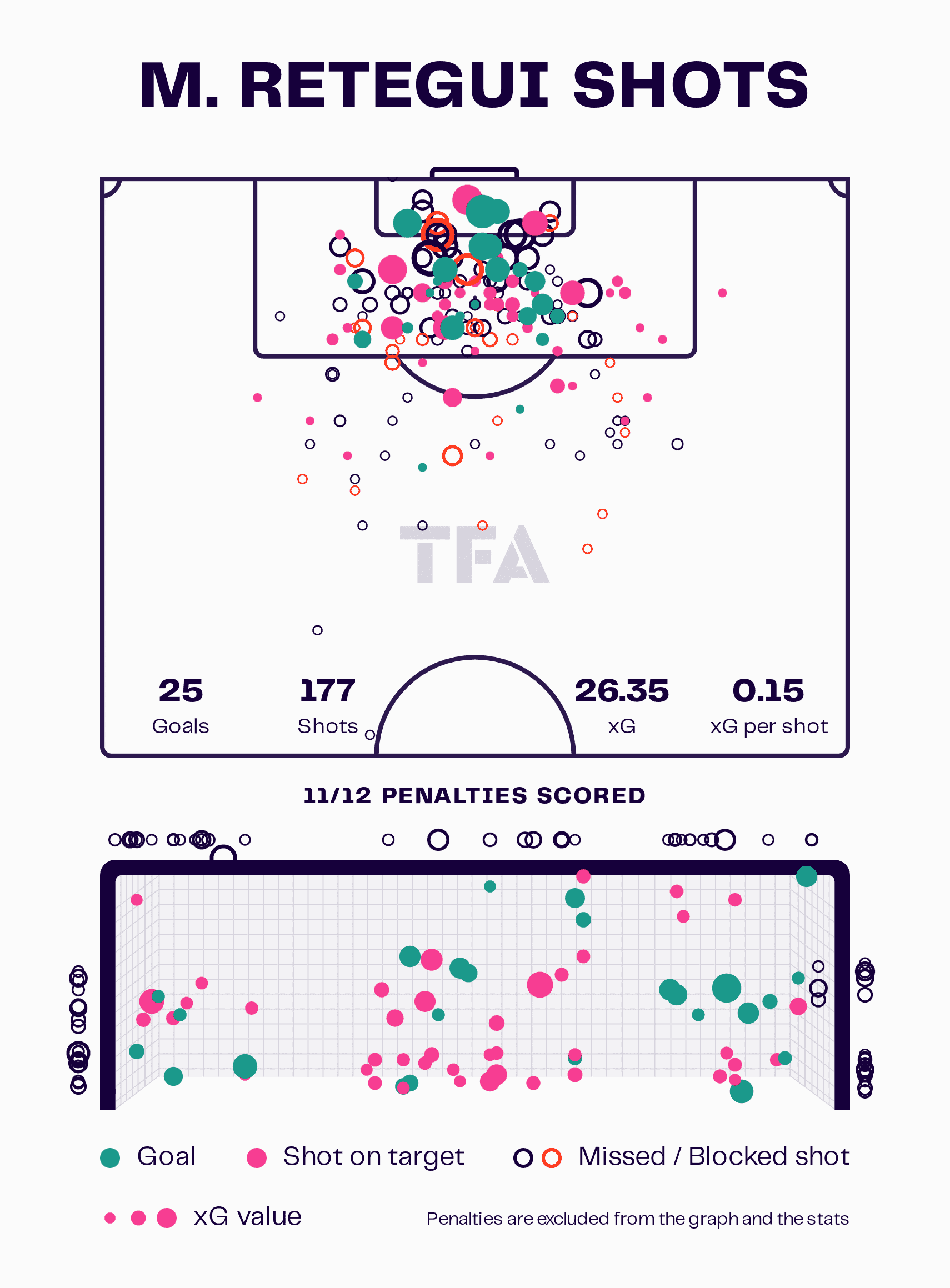
Another aspect that we found important in Retegui’s game is his positioning in crossing situations, where he is initially centred on the goal and then, after a short time, he often attacks the near post. In the image below we can see an example of Retgui’s strength in escaping the centre-back’s marking and consequently gaining an advantage on his movement.
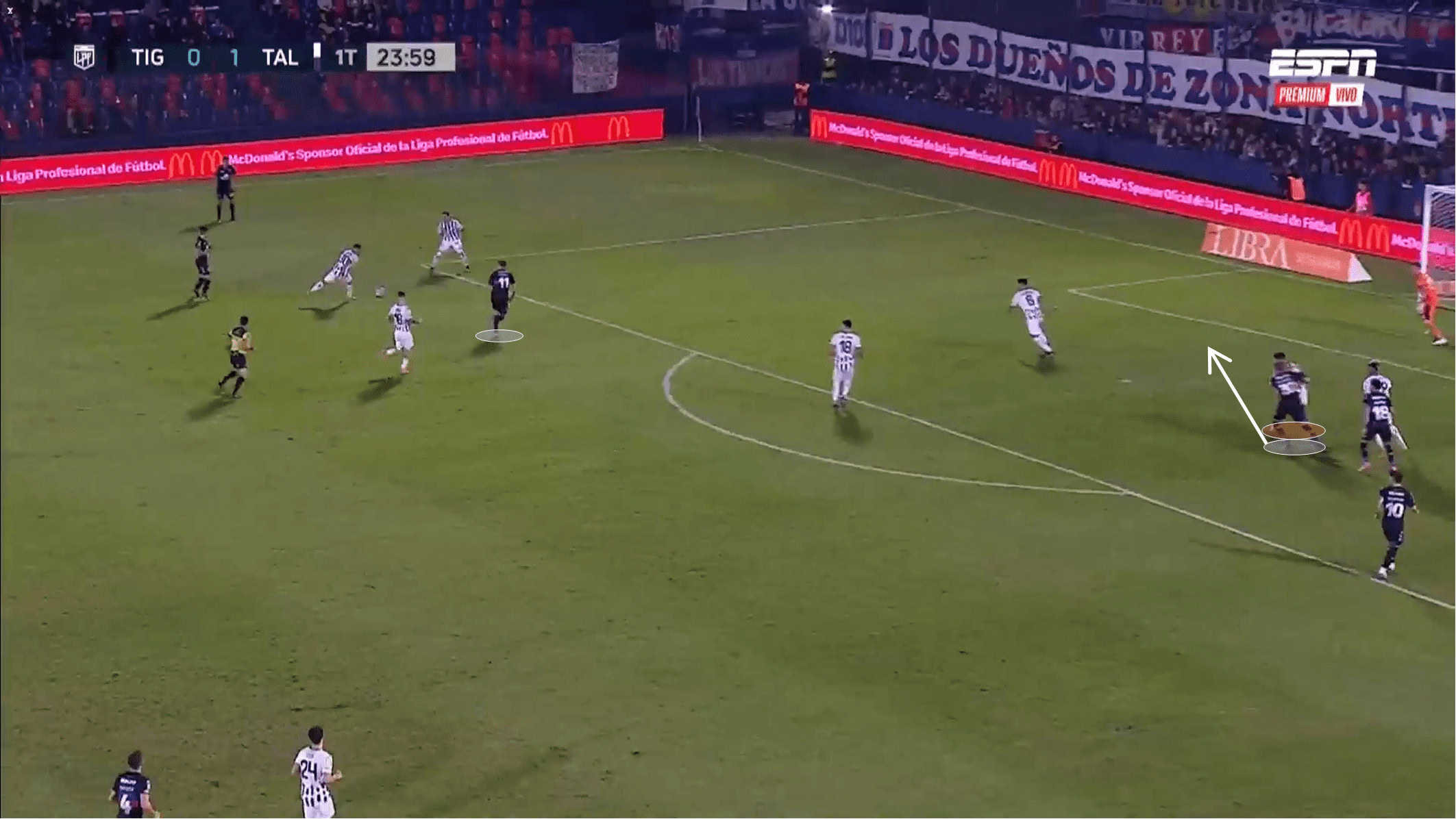
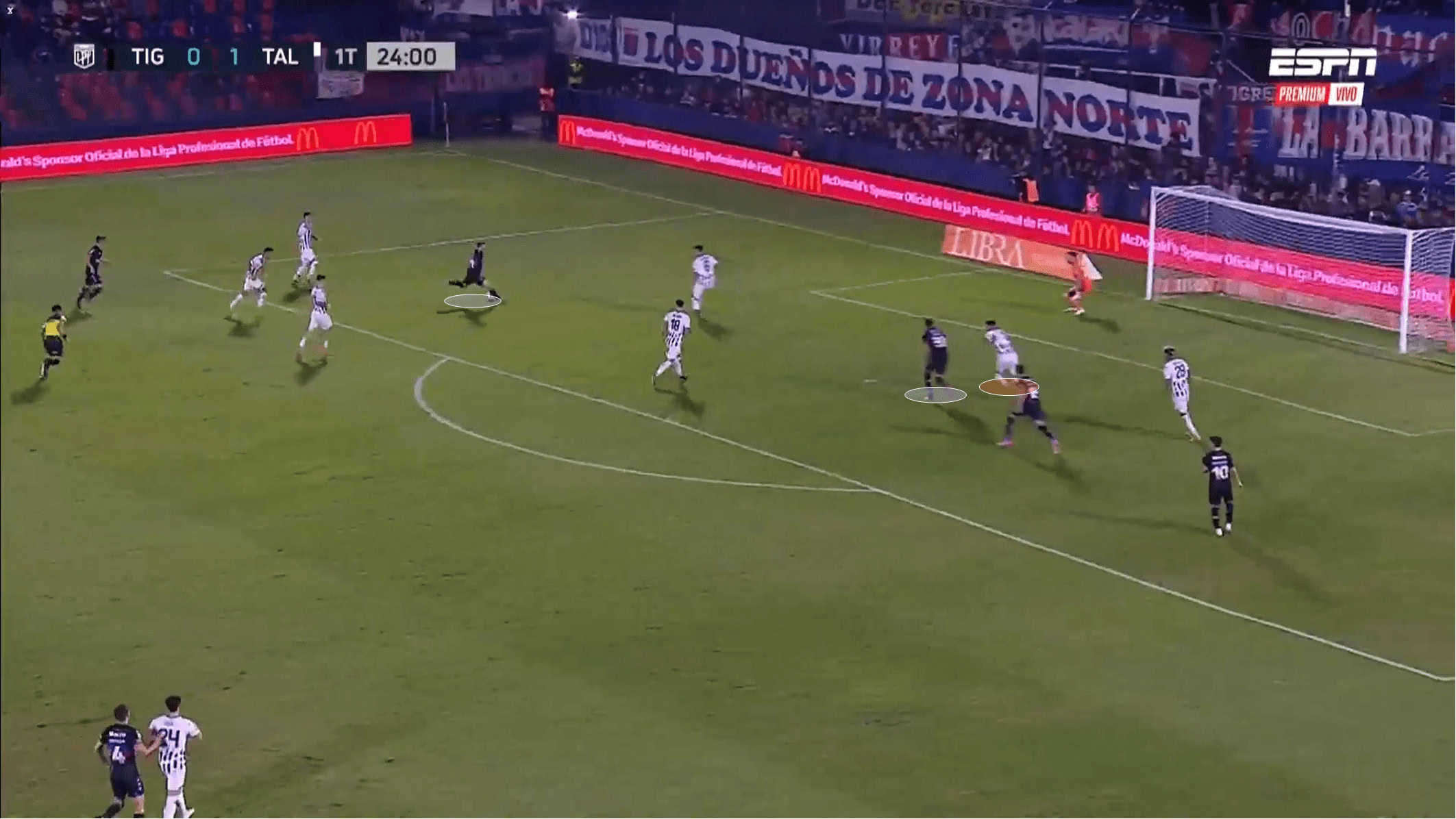
He is also dangerous in offensive corners, not only due to his physique but, again, due to his positioning. He seems to usually use his teammates to block his defenders as a way to free his offensive movement. Once again, he has a preference to attack the near post. However, we can also see him being dangerous while attacking the far post.
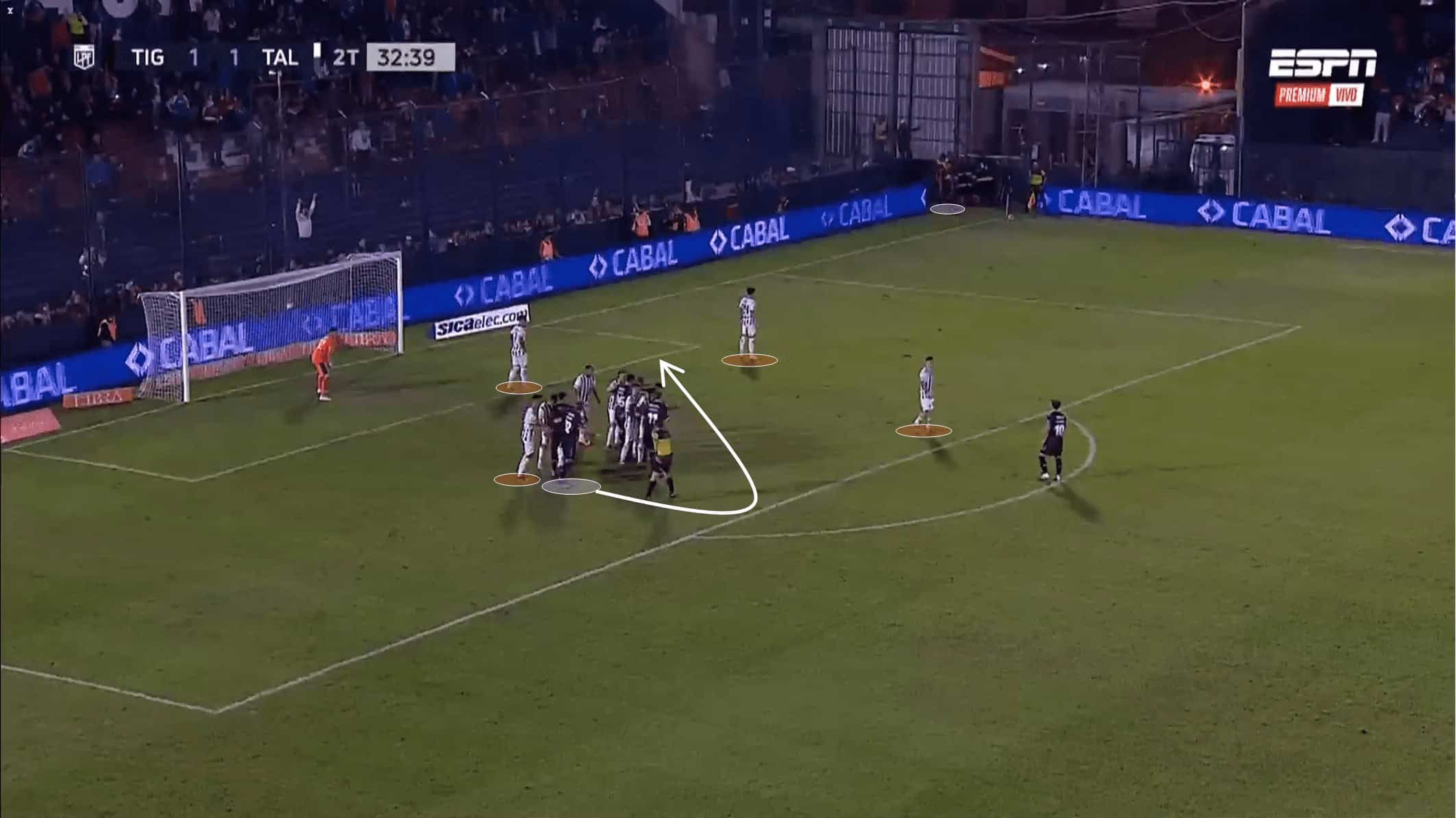
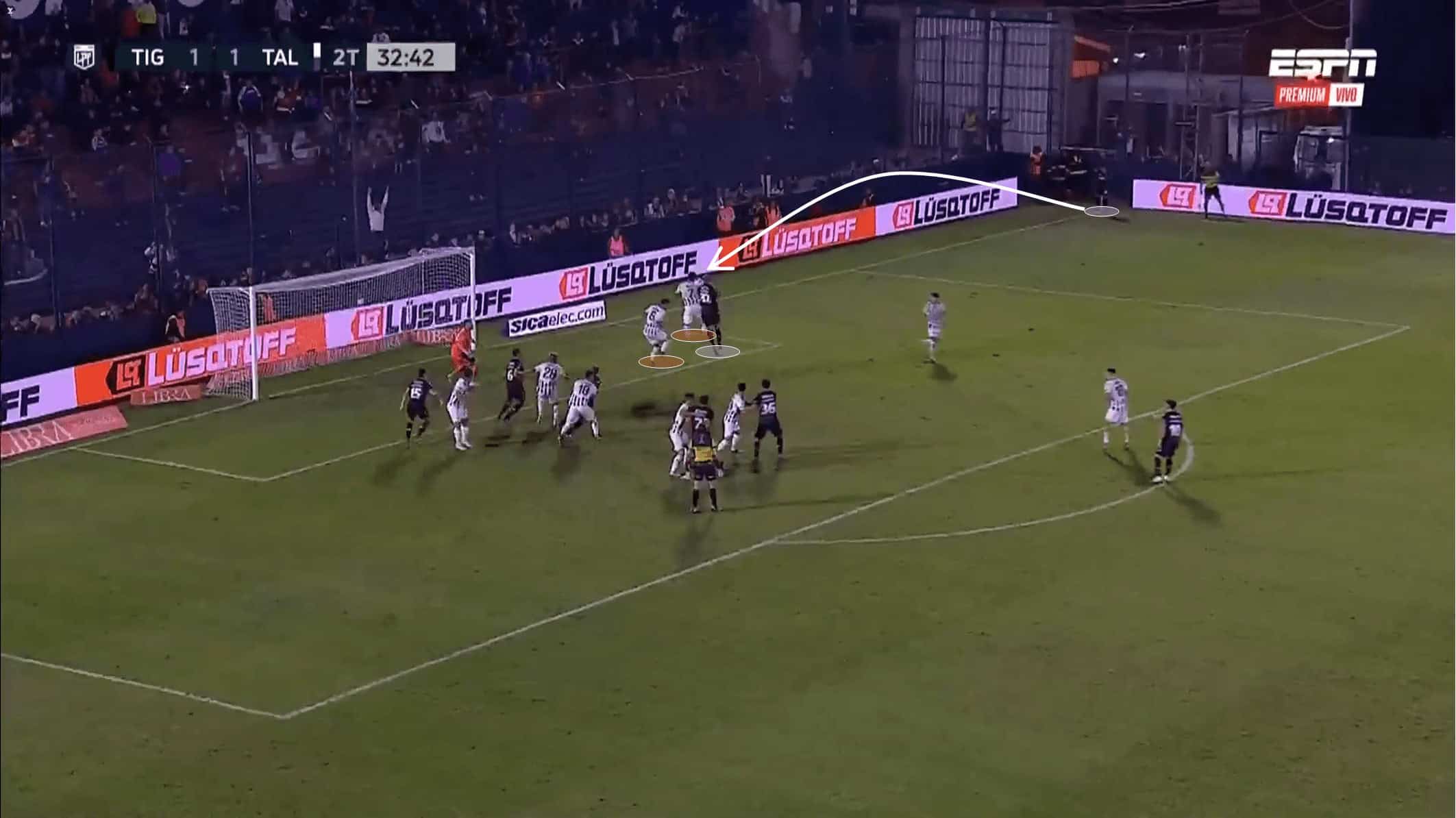
Conclusion
As we said, Mateo Retegui is, at the moment, one of the most exciting Italian strikers and a summer move to a European club is highly likely to happen. He is a striker that can make the difference inside the box due to his aerial game and shot quality. Additionally, his scoring instinct is very present and is visible not only in his opportunism which leads to a wide range of tap-in goals but also in scoring penalties.
In this piece, we talked about in what way his physical strength and height positively influence his game, especially regarding his aerial duels. Besides that, we also mentioned his typical movements of attacking the depth and his build-up support which can be very useful in an eventual new team.
The way we see it, his work rate and determination are one of the most important and impressive attributes in Retegui’s game. In fact, such qualities are increasingly less common in a striker and, as it goes, contribute positively to his game and to his distinction among other possible candidates for a transfer move.
Still, we think that Retegui can turn his game less predictable by exploring the space between the lines more often or by opening on the flank where he can be a serious problem to the opposition. Besides that, due to the level that he is inserted, we think that Mateo still lacks with the ball during the match, and we are convinced that if he has the opportunity to play in a better and more challenging reality, other technical characteristics would naturally come out.






Comments